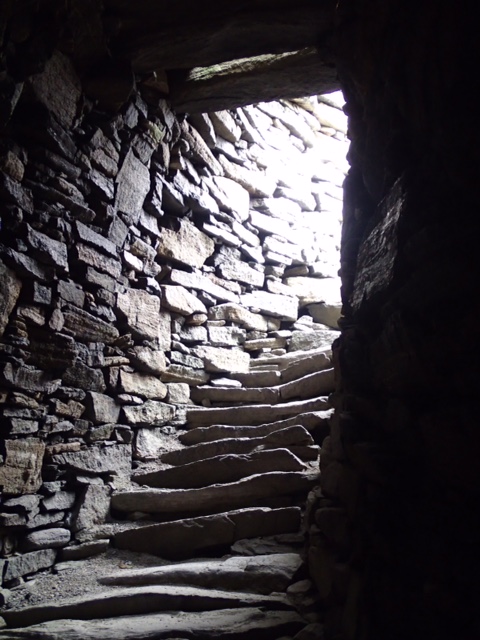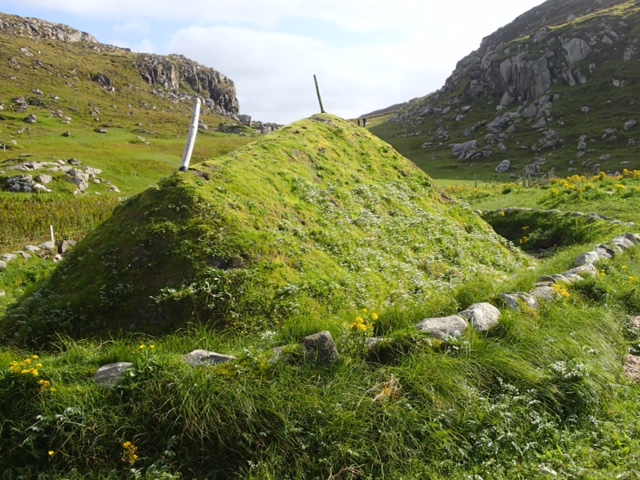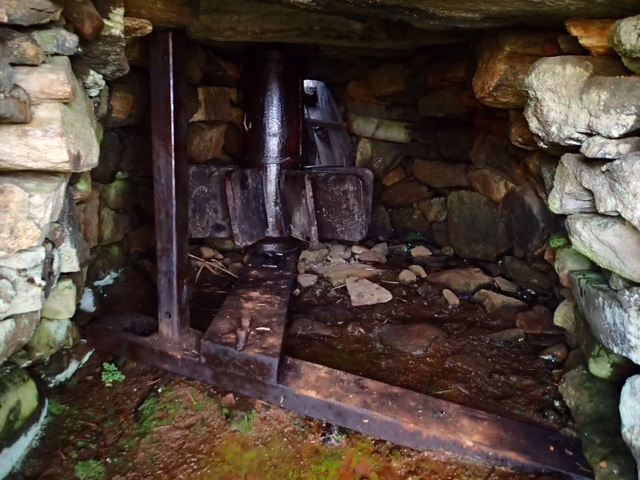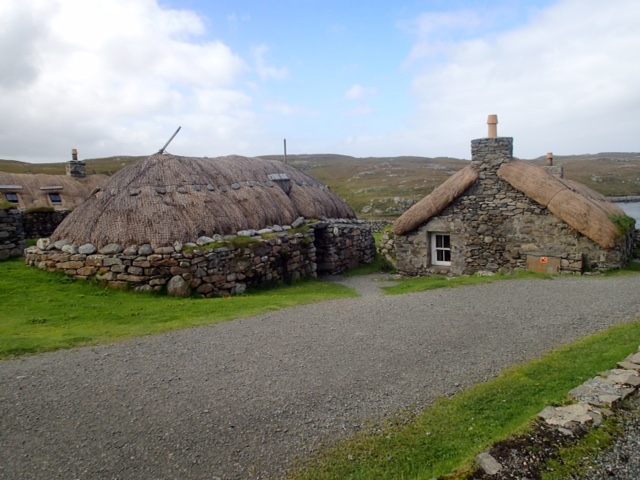History - there's a lot of it about

VulcanSpirit
Richard & Alison Brunstrom
Tue 13 Sep 2016 09:23
Firstly, the Calanais/Callanish standing stones. The earliest human inhabitants on Lewis, Mesolithic hunter-gatherers, left few traces, but in the Neolithic people started building huge monuments. The Calanais stones are of Lewissian gneiss, some of the world's oldest rocks at about 3000 million years. They were erected sometime in the period 4000-1800BC and may have been used to predict a peculiar lunar event visible here on a repeating pattern every 18.6 years.
By the Iron Age(here, about 800BC-800AD) defensive structures become common, indicating a very different society. Huge fortified dry stone houses known as brochs are found all over NW Scotland, and one of the best preserved is Dùn Chàrlabhaigh:
Brochs are characterised by a cavity wall serving the same purpose as in a modern house but much larger - able to accommodate a staircase to the upper floors:
Interestingly the staircase here twists to the right, exactly as in a medieval castle, making it very difficult for a right-handed attacker to wield their sword. Originally there would have been a turf roof, with a byre at ground level and an extended family living in the upper floors. These were probably the equivalent of a later manor house for the locl xhief with the majority of the population living in much less grand premises.
In the late Iron Age, 400-800AD houses very like those found in Scotland up until modern times had developed. Here is a recreated house of the period at Bostadh, in one of the most picturesque places in Scotland. The original village was buried in sand, only to emerge following a great storm in the 1990s. Archaelogical excavation has allowed an exact replica of one of the houses to be built. Like the original it was built largely underground, with only the roof above the surface, and is amazingly cozy.
Interestingly the turf roof is now suffering badly from rabbit attack. Rabbits were unknown here in the Iron Age being introduced much later - and now that mink, also introduced, have been eliminated to protect the rare birds the rabbits are breeding like rabbits, as they would. Not a problem the original inhabitants would have had to cope with.
The Norse arrived around 800AD, and settled. In fact the whole of the Outer Hebrides were part of Norway until the Treaty of Perth in 1267. When they were not off a-viking (a verb originally, I discover) they were farmers. One of their legacies here is the Norse mill, a restored example of which is at Siabost:
The other half of the VS crew is sitting on an original seat outside in the sunshine, surely exactly as the miller must have done. Inside the mill it is very simple, but very effective:
The wheel itself is an absolutely basic horizontal wheel. Simple but effective, though not very powerful.
Adjacent to the mill is a similar building, used as a kiln to dry grain before milling as the climate here is so wet. This technology continued in use until living memory. Amazing.
The Norse were great game players. One of the treasures of Scotland s the set of Norse chess figures unearthed from a sand dune near Uig on Lewis. Their exact origin is unclear due to a combination of secrecy, incompetence and deliberate obfuscation, but they were on sale in London in the 1830s, luckily purchased by the British Museum. Six of them are on display in Stornoway:
There are about 80 of them, and in the whole world there was inly one other piece known, a queen found in Trodheim but now lost. They are made of walrus ivory and whale tooth, probably in Trondheim around 800AD. Beautiful.
The Norse introduced the longhouse which continued in use here as the blackhouse right up until modern times. Here is a typical ruin, showing clearly the arrangement of a single long room with attached barn and adjacent walled paddock:
And here, part of the restored blackhouse vilage at Gearrannan which was abandoned in the 1970s (when the population moved into council houses) and more or less immediately turned into a museum. Now one house is a café shop, one a hostel, several are holiday cottages and one is a museum display of crofting life in the 1950s. These houses were built in the 1850s to a style unchanged for about a thousand years. Electricity arrived in the 1950s, and running water in 1962:
A staple of the local economy was the manufacture of Harris tweed after it suddenly became fashionable in London and Edinburgh, made on a loom like this one:
This museum loom is still in commercial use - the tweed being made has a customer waiting.
That's it. A brief one day tour of Hebridean history, but one could spend weeks on this one island visiting fascinating and historically important sites from the Stone Age to modern times.
Sent from my iPad










